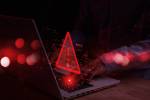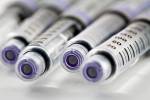Pacemakers go high-tech
(BPT) - Steven Reiss, a New York City lawyer and long-distance swimmer, was the picture of health for an active 63-year-old man. Among his many accomplishments in the water, he was part of a relay team that swam the English Channel in 2008 and around the island of Manhattan on five separate occasions. All was well, until he started struggling to catch his breath in the water or while walking up a flight of stairs.
“I am conscious of my body and sensitive to changes. Over time, my pace in the pool significantly slowed down and I found myself fighting for air during swimming exercises, which was very odd. I knew something wasn’t right,” says Reiss.
He paid a visit to Dr. Stavros Mountantonakis, associate director of Cardiac Electrophysiology at Lenox Hill Heart and Vascular Institute of New York. After a series of tests, Steven was diagnosed with an abnormally slow heartbeat which would require the implantation of a pacemaker.
“After the test results came back, we had an in-depth discussion about what type of pacemaker would be his best option. We wanted to make sure the device had a sustainable battery life and would be able to adapt to Steven’s active lifestyle,” Dr. Mountantonakis recalled.
Pacemakers have been the standard of care for decades for slow heart rates, and to the layperson, one device was considered similar to the next. However, recent technological advancements have resulted in new products that make it possible for patients and their doctors to consider long-term health needs, as opposed to a “quick fix” solution for immediate heart health concerns.
Next-generation pacemakers include features that benefit both patients and their doctors, such as compatibility with MRIs, solving a decades-old problem that prevented pacemaker patients from having access to this extremely common diagnostic imaging tool.
Pacing devices can adjust a person’s heart rate based on their activity level. Certain ones can adjust on a beat-to-beat basis with a technology called Closed Loop Stimulation that can also sense when a patient is excited or under stress, and will adjust the heart rate to compensate.
Pacemakers are also equipped with wireless remote monitoring capabilities that transmit data to physicians daily, allowing problems to be detected in virtually real-time.
“As a physician, I hope to provide the highest quality of care to my patients,” says Dr. Nicholas Skipitaris, director of Cardiac Electrophysiology at Lenox Hill Heart and Vascular Institute of New York. “These technological advancements have resulted in improved clinical benefits to our patients.”
In Reiss’s case, MRI-compatibility was high on his list of specifications, since he had had MRIs prior to getting his pacemaker and could require an MRI scan in the future.
After a thorough research process, along with the advice of Dr. Mountantonakis, Reiss selected the BIOTRONIK Eluna Pacemaker with ProMRI technology, which received FDA approval in March 2015.
Since receiving his new pacemaker, Reiss no longer suffers from shortness of breath and has resumed his exercise regimen.
“I continue to bike every morning and swim on a regular basis, plus I have peace of mind knowing that the pacemaker I chose will allow me to keep my very active lifestyle,” he says.
For more information about the Eluna pacemaker visit: www.biotronikusa.com.



















